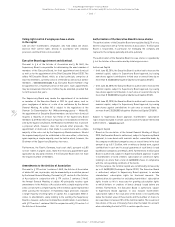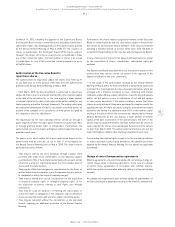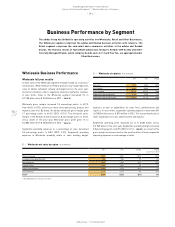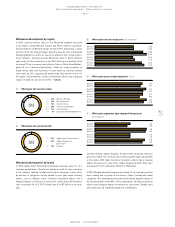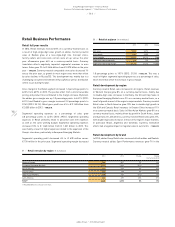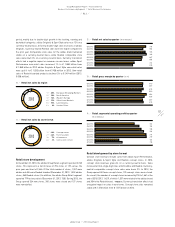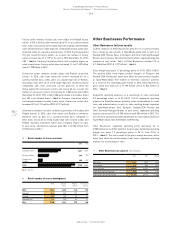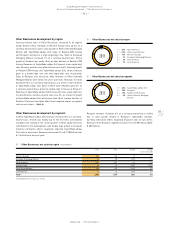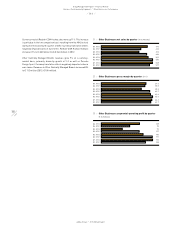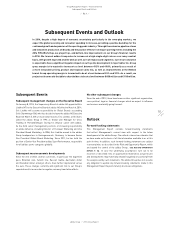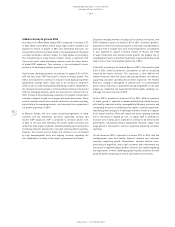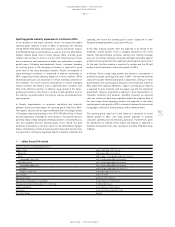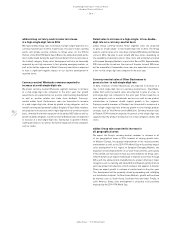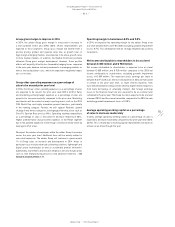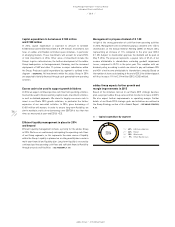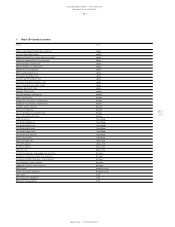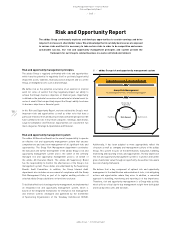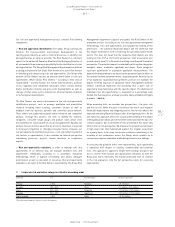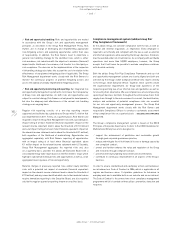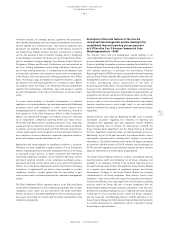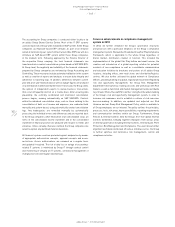Reebok 2013 Annual Report Download - page 156
Download and view the complete annual report
Please find page 156 of the 2013 Reebok annual report below. You can navigate through the pages in the report by either clicking on the pages listed below, or by using the keyword search tool below to find specific information within the annual report.
adidas Group
/
2013 Annual Report
Group Management Report – Financial Review
152
2013
Subsequent Events and Outlook
/
03.4
/
Global economy to grow in 2014
According to the World Bank, global GDP is projected to increase 3.2%
in 2014 (2013: 2.4%). While several major high-income economies are
expected to return to growth in 2014 and inflationary pressures are
forecasted to remain low in many markets, the development of the global
economy nonetheless remains subject to a high degree of uncertainty.
The strengthening of many mature markets marks a significant shift
from recent years when developing countries were the major drivers
of global GDP expansion. Their recovery is also anticipated to boost
prospects for developing markets’ export activity.
High-income, developed markets are expected to expand 2.2% in 2014,
with the euro area’s GDP forecasted to return to modest growth. The
USA is also expected to continue to reduce its bond buying programme
(quantitative easing), which could lead to an increase in long-term
interest rates in some developed and developing countries. Nonetheless,
the strongest economic progress in the world will continue to be derived
from the emerging markets, which are forecasted to increase 5.3% in
2014. In many of these developing economies, this growth is projected to
continue to support a rapid rise in wages and disposable income. These
positive economic expectations and the outlook for consumer spending,
particularly in the emerging markets, are forecasted to be supportive of
our growth aspirations in 2014.
In Western Europe, with less severe austerity programmes in many
countries and low inflationary pressures supporting recovery and
modest GDP expansion, GDP is projected to increase around 1.2%
in 2014. In the euro area, Germany, the union’s largest economy, will
remain the main engine of growth, fuelled by healthy export activity and
increasing domestic demand and consumer and investment spending.
However, the recovery will be fragile and continue to be constrained
by high unemployment rates and ongoing concerns regarding the
over-indebtedness of many of the region’s governments and banks.
European emerging markets are expected to continue to improve, with
GDP estimated to grow at a healthy 2.8% in 2014. Economic growth is
projected to come from increased exports as the region should benefit in
particular from a stronger euro area. Increasing domestic consumption
is also expected to support economic activity. In Russia, the trend
of wage moderation and slowing income growth, the gradual rise in
unemployment levels and further moderation in personal lending could
lead to a less robust consumption growth rate in 2014.
In the USA, according to the Federal Reserve, GDP is forecasted to grow
3.0% in 2014, driven by domestic consumption as well as increasing
industrial and export activities. The consensus is that inflation will
remain moderate, while the labour and housing markets will improve,
supporting consumer spending and economic expansion. The Federal
Reserve’s strategy is anticipated to continue with its accommodative
policy stance, reducing its quantitative easing programme as the year
progresses. Headwinds are expected from further public spending cuts,
although at a lower rate than in 2013.
In Asia, GDP is projected to increase 4.2% in 2014. With the exception
of Japan, growth is expected to remain relatively high during the year,
with healthy industrial activity, manageable inflationary pressures and
strong wage increases contributing to the region’s economic expansion.
Improving growth prospects in developed markets should also support
Asia’s export activities. China will remain the fastest-growing economy
and is forecasted to expand by 7.4%. In Japan, GDP is predicted to
increase 1.3% in 2014, and is expected to continue to be driven by the
government’s substantial stimulus programme. However, Japan’s real
wage growth is forecasted to contract, negatively impacting consumer
spending.
In Latin America, GDP is expected to increase 3.0% in 2014, with low
unemployment rates and healthy domestic demand and consumer
spending supporting growth. Nonetheless, elevated inflation rates,
particularly in Argentina, and a tight consumer debt environment are
forecasted to negatively impact growth. Concerns also remain regarding
the expectations of more challenging global liquidity conditions and the
potential further weakening of several Latin American currencies.


